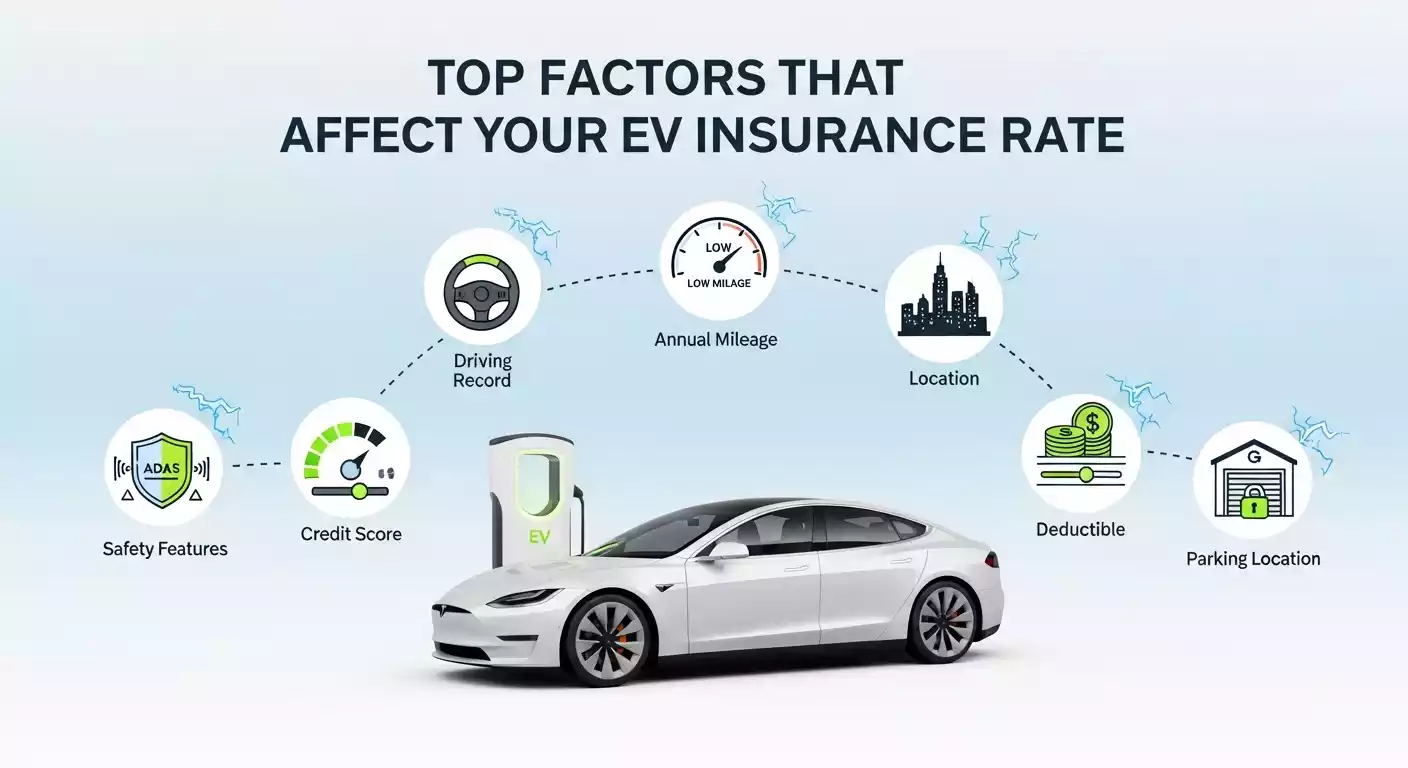Electric Vehicle Insurance: Costs, Coverage and Guide
Electric vehicles (EVs) are transforming transportation with zero-emission driving, instant torque, and lower fuel costs. But when it comes to electric vehicle insurance, many owners are surprised to learn that premiums can differ significantly from traditional gas-powered cars. This evergreen guide covers everything you need to know about electric vehicle insurance—from why rates vary to the best coverage options and proven ways to save.
Whether you’re driving a Tesla, Nissan Leaf, or the latest electric SUV, understanding EV-specific insurance ensures you’re protected without overpaying.
What Is Electric Vehicle Insurance?
Electric vehicle insurance works like standard auto insurance but accounts for the unique risks and components of battery-powered cars. Core coverages include:
- Liability – Required by law; covers damage or injury you cause to others.
- Collision – Pays for repairs to your EV after an accident.
- Comprehensive – Covers theft, fire, vandalism, or natural disasters.
- Uninsured/Underinsured Motorist – Protects you if hit by a driver with little or no insurance.
However, EVs often need specialized add-ons such as:
- Battery replacement coverage
- Charging station protection (home or portable)
- Roadside assistance for battery depletion
- OEM parts guarantee (ensures factory-grade replacements)
Pro Tip: Always confirm that “battery coverage” includes both accidental damage and failure due to defects—some policies exclude the latter.
Why Is Electric Vehicle Insurance More Expensive?
On average, insuring an EV costs 15–25% more than a comparable gas vehicle. Here’s why:
| Factor | Impact on Premium |
|---|---|
| Higher MSRP | EVs like Tesla Model Y or Rivian R1T have elevated replacement costs |
| Battery Replacement | $5,000–$20,000+ per pack; labor-intensive |
| Specialized Repairs | Requires EV-certified technicians and diagnostic tools |
| Limited Repair Shops | Fewer qualified facilities = higher towing & labor fees |
| Advanced Tech | ADAS, sensors, and software increase repair complexity |
That said, not all EVs are expensive to insure. Models like the Chevrolet Bolt, Hyundai Kona Electric, and Nissan Leaf consistently rank among the cheapest EVs to cover due to strong safety ratings and affordable parts.
Top Factors That Affect Your EV Insurance Rate

Your premium isn’t set in stone. Key variables include:
- Your Driving Record – Clean history = big savings
- Annual Mileage – Most EV owners drive <10,000 miles/year → qualify for low-mileage discounts
- Location – Urban areas with high theft or accident rates increase costs
- Credit Score – Used in most states; higher score = lower rate
- Vehicle Safety Features – Automatic emergency braking, blind-spot monitoring → discounts
- Deductible Amount – Higher deductible = lower premium (but more out-of-pocket risk)
- Parking Location – Garage-kept EVs often get theft discounts
Best Insurance Companies for Electric Vehicles
Not all insurers treat EVs equally. Here are top-rated providers known for competitive EV rates and specialized coverage:
| Company | Why It’s Great for EVs | Avg. Annual Rate* |
|---|---|---|
| Geico | Low base rates, multi-policy discounts | $1,400–$2,200 |
| Progressive | Usage-based (Snapshot) rewards low-mileage drivers | $1,600–$2,800 |
| State Farm | Excellent claims service, EV roadside assistance | $1,700–$3,000 |
| USAA (military only) | Lowest rates, battery-inclusive policies | $1,100–$2,000 |
| Travelers | Covers home chargers, eco-rebuild options | $1,800–$2,900 |
| Erie | Affordable in Midwest/East, high satisfaction | $1,300–$2,400 |
Rates are estimates for full coverage on a mid-range EV (e.g., Tesla Model 3, 30-year-old driver, clean record). Always get personalized quotes.
Essential Add-Ons for EV Owners
Don’t settle for basic coverage. Consider these must-have extras:
1. Battery Coverage
- Protects against fire, flood, or collision damage
- Some policies cap payout at 70–80% of battery cost—read the fine print
2. Charging Equipment Insurance
- Covers wall chargers, cables, and portable units
- Typically $500–$2,000 in value
3. Rental Car Reimbursement (with EV Option)
- Ensures you get an electric loaner, not a gas car
4. Roadside Assistance for EVs
- Includes mobile charging, tire service, and towing to the nearest charger
How to Save Money on Electric Vehicle Insurance
Follow these evergreen strategies to lower your premium:
- Compare Quotes Annually Use tools like The Zebra, Insurify, or Policygenius
- Bundle Policies Combine auto + home/renters for 10–25% off
- Ask for EV Discounts
- Green vehicle discount
- Alternative fuel discount
- Pay-in-full discount
- Enroll in Telematics Safe driving = up to 30% off (Progressive Snapshot, Geico DriveEasy)
- Increase Your Deductible From $500 → $1,000 can save $200–$400/year
- Maintain Good Credit Improve score to unlock better rates
- Park Safely Garage parking reduces theft risk
Cheapest EVs to Insure (Updated Models)
| Model | Avg. Annual Premium | Why It’s Affordable |
|---|---|---|
| Nissan Leaf | $1,300–$1,900 | Low repair costs, high safety scores |
| Chevrolet Bolt EUV | $1,400–$2,000 | GM parts network, strong crash ratings |
| Hyundai Kona Electric | $1,500–$2,100 | Warranty-backed battery, affordable tires |
| Mini Cooper SE | $1,600–$2,200 | Compact size, low theft rate |
Common Myths About EV Insurance – Busted
| Myth | Reality |
|---|---|
| “All EVs are expensive to insure” | False—compact models like Leaf are cheaper than many gas SUVs |
| “Battery is always covered” | Only with comprehensive + specific endorsement |
| “Home charger is automatically insured” | Usually requires separate rider |
| “EVs get worse rates because they’re silent” | No evidence—rates based on repair cost, not noise |
Final Thoughts: Protect Your EV the Smart Way
Electric vehicle insurance doesn’t have to be complicated or costly. By understanding coverage needs, comparing top providers, and applying smart discounts, you can secure robust protection at a fair price—year after year.
Action Steps:
- Get quotes from Geico, Progressive, and State Farm
- Confirm battery + charger coverage
- Ask about telematics and low-mileage programs
- Review your policy every 12 months
Drive electric. Insure smart.

